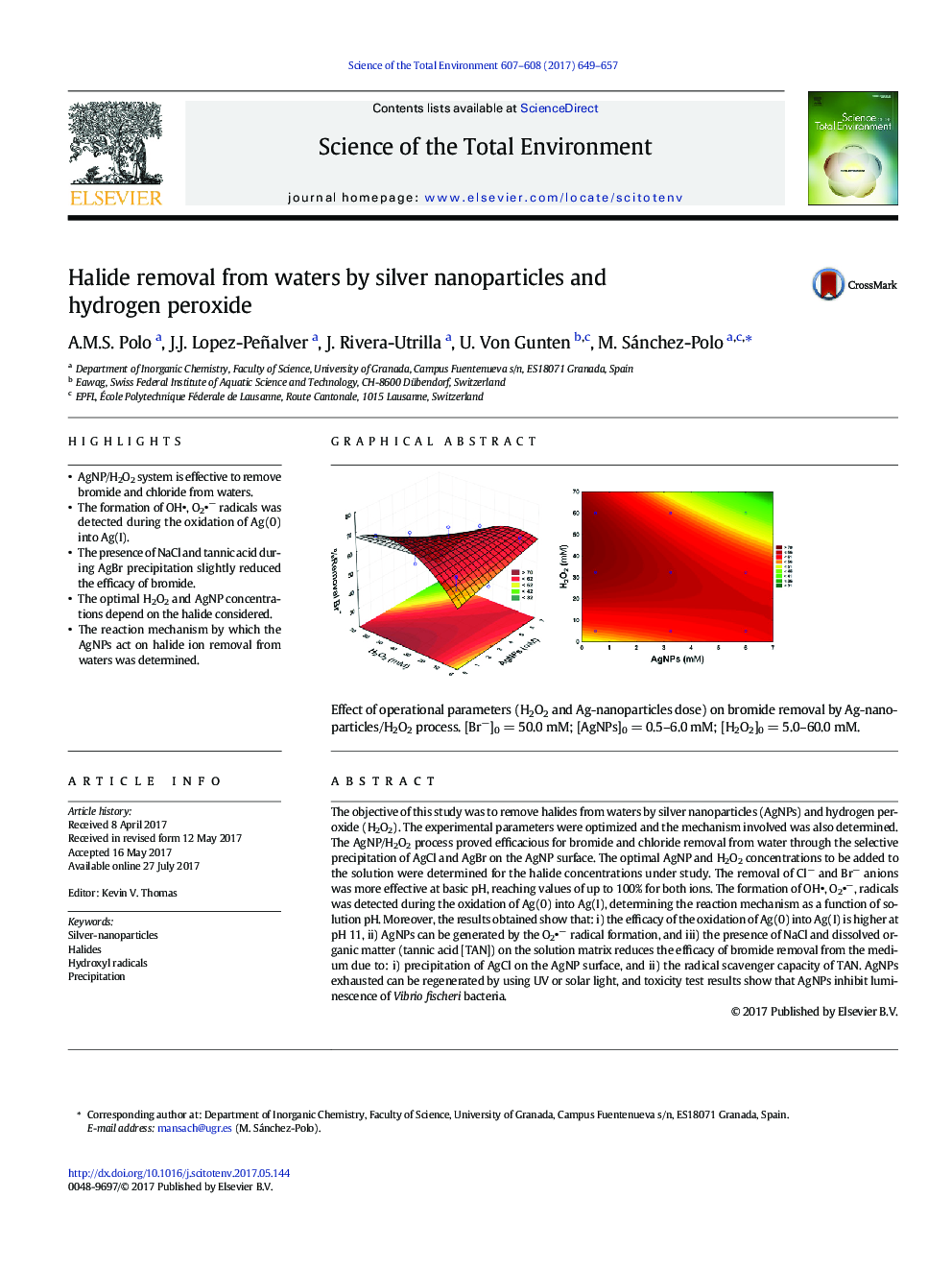| کد مقاله | کد نشریه | سال انتشار | مقاله انگلیسی | نسخه تمام متن |
|---|---|---|---|---|
| 5750021 | 1619694 | 2017 | 9 صفحه PDF | دانلود رایگان |
- AgNP/H2O2 system is effective to remove bromide and chloride from waters.
- The formation of OH, O2â radicals was detected during the oxidation of Ag(0) into Ag(I).
- The presence of NaCl and tannic acid during AgBr precipitation slightly reduced the efficacy of bromide.
- The optimal H2O2 and AgNP concentrations depend on the halide considered.
- The reaction mechanism by which the AgNPs act on halide ion removal from waters was determined.
The objective of this study was to remove halides from waters by silver nanoparticles (AgNPs) and hydrogen peroxide (H2O2). The experimental parameters were optimized and the mechanism involved was also determined. The AgNP/H2O2 process proved efficacious for bromide and chloride removal from water through the selective precipitation of AgCl and AgBr on the AgNP surface. The optimal AgNP and H2O2 concentrations to be added to the solution were determined for the halide concentrations under study. The removal of Clâ and Brâ anions was more effective at basic pH, reaching values of up to 100% for both ions. The formation of OH, O2â, radicals was detected during the oxidation of Ag(0) into Ag(I), determining the reaction mechanism as a function of solution pH. Moreover, the results obtained show that: i) the efficacy of the oxidation of Ag(0) into Ag(I) is higher at pHÂ 11, ii) AgNPs can be generated by the O2â radical formation, and iii) the presence of NaCl and dissolved organic matter (tannic acid [TAN]) on the solution matrix reduces the efficacy of bromide removal from the medium due to: i) precipitation of AgCl on the AgNP surface, and ii) the radical scavenger capacity of TAN. AgNPs exhausted can be regenerated by using UV or solar light, and toxicity test results show that AgNPs inhibit luminescence of Vibrio fischeri bacteria.
Effect of operational parameters (H2O2 and Ag-nanoparticles dose) on bromide removal by Ag-nanoparticles/H2O2 process. [Brâ]0Â =Â 50.0Â mM; [AgNPs]0Â =Â 0.5-6.0Â mM; [H2O2]0Â =Â 5.0-60.0Â mM.127
Journal: Science of The Total Environment - Volumes 607â608, 31 December 2017, Pages 649-657
